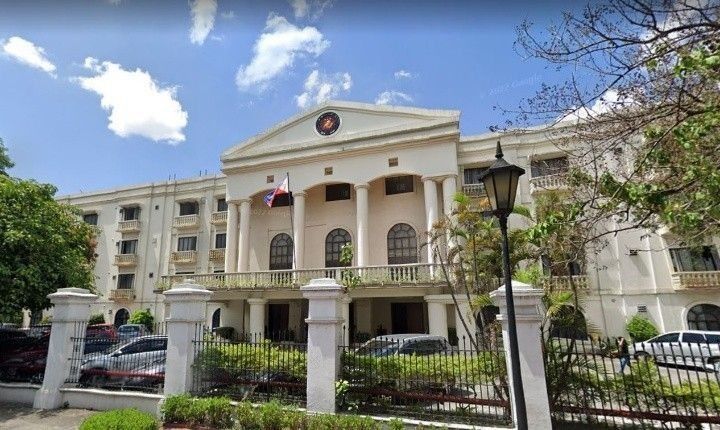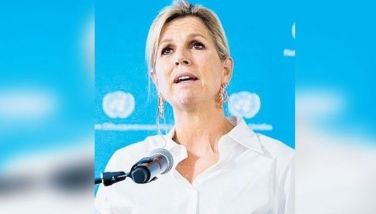DBM: 169,688 vacant government posts, 62,158 contractuals

MANILA, Philippines — There are more than 160,000 unfilled positions in the national government, while 62,000 workers hold non-permanent positions, according to the Department of Budget and Management (DBM).
During the House of Representatives committee on government reorganization’s hearing yesterday, DBM-Systems and Productivity Improvement Bureau assistant director Rochelle Ramirez revealed that there are now 169,688 “vacant positions across different employee groups” in the national government, while at same time 62,158 workers have not been regularized as of last June.
Ramirez said of these non-permanent employees, 55,227 are on contractual basis, 6,440 are casual while 191 are sub-teachers.
“It is likewise noteworthy to examine why such non-permanent positions exist, when, in fact, there are several unfilled positions in the government. Hence, the need to study the same as part of the rightsizing efforts of the government,” she added.
The DBM official noted there is a total of 1,942,138 “authorized regular positions” in various national government agencies, with teaching personnel accounting for the most slots at 975,225 or 50.27 percent overall.
Of the 975,225 authorized positions for teaching, 936,879 are filled while 38,346 are vacant.
On the other hand, there are 56,893 authorized positions for allied medical personnel, but 11,008 of them remain unfilled.
There are 387,789 authorized slots for general civil servants, of which 306,116 are filled while 81,673 are vacant.
Priorities
Meanwhile, the sectors of agriculture, culture and the arts and sports are among the priorities to be reformed as part of the government’s move to reorganize and make the bureaucracy more efficient.
During the same hearing yesterday, the DBM laid down the results of its sector review project in view of the potential reforms that could be implemented.
Ramirez said 10 priority sectors were initially covered in the review. These include agriculture and agrarian reform, culture and the arts, sports, education, environment and natural resources and interior and local government.
Also part of the priority sectors are labor and employment, planning, programming, finance and budgeting, trade and industry and transportation and tourism.
The DBM, however, has yet to provide the specific departments when asked by lawmakers which ones have overlapping functions.
Overall, the government has 186 agencies under the executive branch, of which 26 are departments, 130 are attached agencies and 30 are executive offices under the Office of the President (OP).
Nonetheless, Ramirez said the study revealed redundant, overlapping and duplicating functions among government agencies while others are performing functions that are conflicting.
There are also unclear delineation of functions, fragmented operations among agencies and low-performing agencies.
In terms of personnel issues, there are lack of or unfilled plantilla positions and personnel as well as lack of technical capacity of government employees, especially mandates that are highly specialized.
The DBM study also showed inefficient systems and processes and ineffectiveness of some projects and programs in terms of service delivery.
“We find this the opportune time to pursue reorganization and systemic reform in the bureaucracy,” Ramirez said.
“Using the findings of the review, we now have baseline data and initial information as to what functional and organization actions the government needs to undertake,” she added.
Following the review, the DBM is actively pursuing three actions regarding the government’s bureaucratic reform, according to Ramirez, one of which is the conduct of continuing studies on the mandates, functions, systems and processes of the agencies that can serve as inputs or reference in crafting executive orders and other legislative measures.
“We will continue recommending to the OP the pursuit of functional and organizational shifts of agencies concerned in the executive branch through issuance of EOs, as necessary,” Ramirez said.
“This is for agencies not included in the priority sectors of the present administration and created through executive issuances since shifts in their functions could already be pursued by the OP,” she said.
The DBM official maintained that this is part of the push to enact the National Government Rightsizing Program, which is one of the list of 32 bills prioritized by the Legislative-Executive Development Advisory Council.
This aims to primarily enhance the government’s institutional capacity to implement transformational reform initiatives and improve public service delivery, focus on core functions of agencies and secure effective and economical implementation of programs.
The most recently conducted rationalization program was in 2004 to 2013, which cost the government P6.621 billion for retirement benefits and separation incentives.
This, however, resulted in P4.273 billion in personnel savings used to fund priority programs of the government.
During that time, a 20.8 percent reduction in authorized regular positions was recorded. – Louise Maureen Simeon
- Latest
- Trending



























